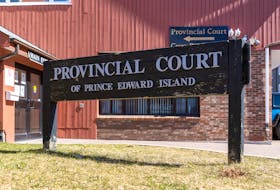CHARLOTTETOWN, P.E.I. - The true details surrounding the death of an Aboriginal woman in Charlottetown in 1977 took far too long to get to family members that for years wrongly feared foul play and failed justice, says Charlottetown Police Deputy Chief Brad MacConnell.

A meeting took place last Friday in response to the family seeking answers to the death of Mary Francis Paul near the capital city’s waterfront four decades ago.
Barbara Bernard and her granddaughter spoke before the National Inquiry on Missing and Murdered Indigenous Women and Girls earlier this month in Moncton.
They said they knew few details about Paul’s death and wanted to know if police investigated.
Bernard told the inquiry she was only 16 at the time of her mother's death and police never gave her any details. She only discovered 12 years later that the death may have been suspicious, and that the body might have been dumped in a metal bin.
On Friday, Bernard, her daughter and her grandchildren met with MacConnell; Susan Maynard, provincial manager of Victim Services with the Department of Justice and Public Safety; and the officer who responded to the call of Paul’s death in 1977.
MacConnell says police were able to set the record straight.
“It was a really positive meeting,’’ he says. “It’s just unfortunate it took so long to give them the accurate account of exactly what happened.’’
MacConnell says Bernard and her family members were provided misinformation over the years, such as that Paul’s neck was broken and that the body was found in a metal drum.
“That wasn’t the case,’’ he says. “And I think the Bernard family was relieved to hear that.’’
The autopsy report, notes MacConnell, concludes Paul died due to acute alcoholism, aspiration by vomit and exposure on an October evening near the city’s waterfront.
Police believe Paul was sitting on a brick window well and, due to high intoxication, fell backwards into the well where her body was found.
MacConnell says the family members became very emotional, particularly Bernard, when taken to the site of Paul’s death.
“You could tell the hurt was still there 40 years later,’’ he says.
Still, MacConnell feels the family was satisfied with what police had to tell them concerning the circumstances around Paul’s death.
“We were really glad that we met with the family,’’ he adds.
“I’ve learned out of this that communicating to family members in times of extreme loss or crisis is a very important thing to do because here we have a lady that suffered in silence for almost 40 years before she really got the right information.’’
The Guardian was unable to reach Bernard for comment.








